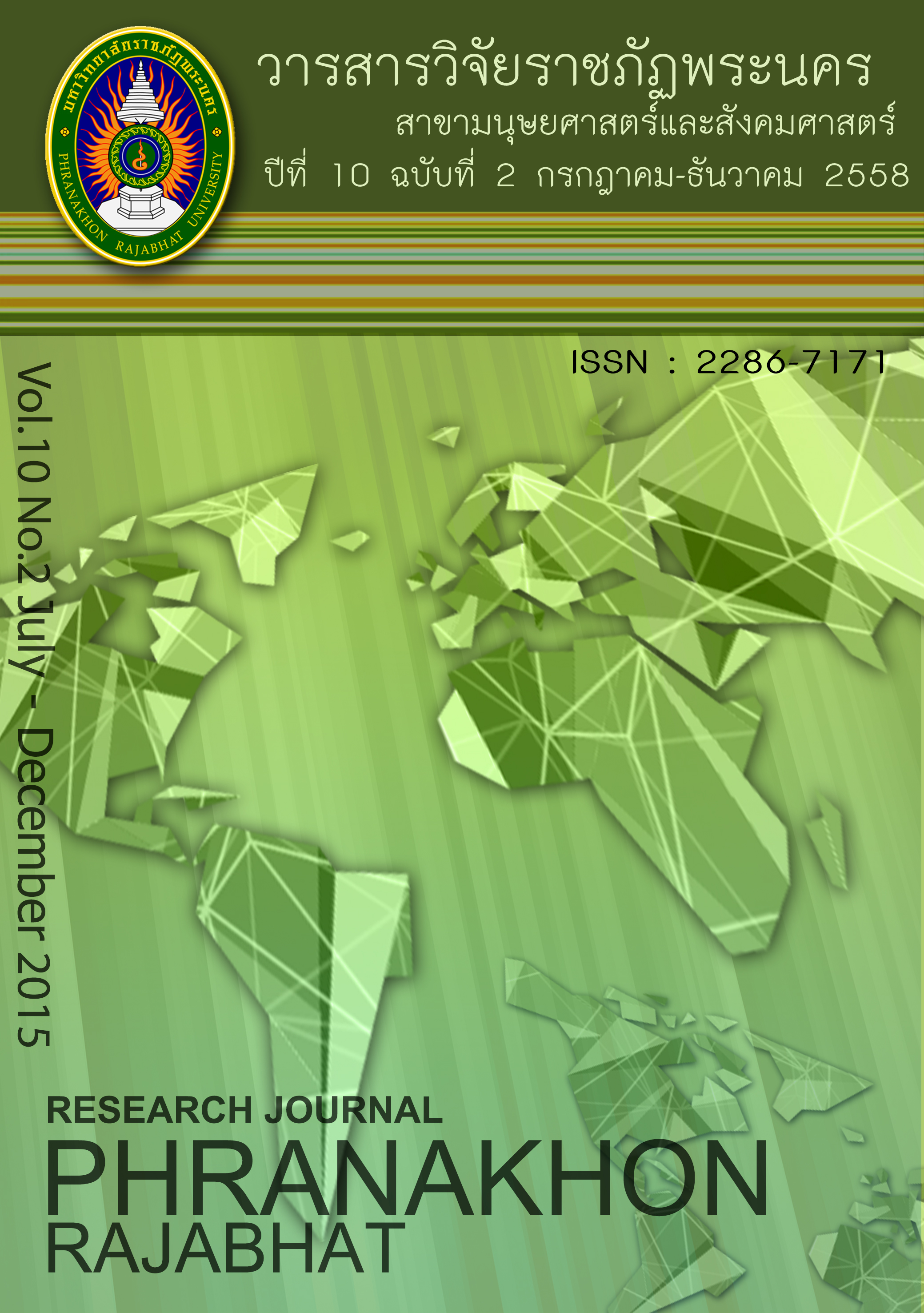การศึกษาศักยภาพการเป็นผู้เรียนรู้ตลอดชีวิตของนักศึกษากลุ่ม มหาวิทยาลัยราชภัฏ
Main Article Content
บทคัดย่อ
การศึกษาครั้งนี้มีวัตถุประสงค์เพื่อศึกษาศักยภาพการเป็นผู้เรียนรู้ตลอดชีวิตของนักศึกษา เพื่อศึกษาความสัมพันธ์ระหว่างปัจจัยด้านภูมิหลังและลักษณะส่วนตัว และด้านสภาพแวดล้อมทางการเรียนกับศักยภาพการเป็นผู้เรียนรู้ตลอดชีวิตของนักศึกษา และเพื่อสร้างสมการพยากรณ์ศักยภาพการเป็นผู้เรียนรู้ตลอดชีวิตของนักศึกษา กลุ่มตัวอย่างคือ นักศึกษาชั้นปีสุดท้ายกลุ่มมหาวิทยาลัยราชภัฏในระดับปริญญาตรี จำนวน 718 คน โดยการสุ่มแบบหลายขั้นตอน เครื่องมือที่ใช้คือ แบบสอบถาม สถิติที่ใช้ในการวิเคราะห์ข้อมูลได้แก่ ร้อยละ ค่าเฉลี่ย ส่วนเบี่ยงเบนมาตรฐาน สหสัมพันธ์แบบเพียร์สันและวิเคราะห์การถดถอยพหุคูณแบบขั้นตอน ผลการวิจัยเป็นดังนี้ 1. ศักยภาพการเป็นผู้เรียนรู้ตลอดชีวิตของนักศึกษาโดยรวมเฉลี่ยอยู่ในระดับมากและเมื่อพิจารณาเป็นรายด้าน 3 อันดับแรกคือ ด้านการดำเนินภารกิจต่าง ๆ ด้วยการพึ่งตนเอง ด้านทักษะการเรียนรู้ และด้านจิตใจรักการแสวงหาความรู้ ตามลำดับ 2. ค่าสัมประสิทธิ์สหสัมพันธ์ที่มีความสัมพันธ์ทางบวกกับศักยภาพการเป็นผู้เรียนรู้ตลอดชีวิตของนักศึกษาคือ แรงจูงใจใฝ่สัมฤทธิ์ และมีค่าความสัมพันธ์ทางลบกับ ผลสัมฤทธิ์ทางการเรียน และการเข้าร่วมกิจกรรมของนักศึกษา 3. ผลการวิเคราะห์โดยการพยากรณ์ที่มีความสัมพันธ์จากสมการถดถอยพบว่า แรงจูงใจใฝ่สัมฤทธิ์โดยสามารถอธิบายความแปรปรวนได้ร้อยละ 39.70 มีค่าความคลาดเคลื่อนมาตรฐานในการพยากรณ์เท่ากับ 28.81 สมการพยากรณ์สามารถทำนายศักยภาพการเป็นผู้เรียนรู้ตลอดชีวิตของนักศึกษา โดยใช้คะแนนดิบคือ Y1 = 170.604+3.403X3 และสมการพยากรณ์สามารถทำนายศักยภาพการเป็นผู้เรียนรู้ตลอดชีวิตของนักศึกษา โดยใช้คะแนนมาตรฐานคือ Z1 = 0.630Z3
This study aimed to investigate the potentials of being a lifelong student, to study the relationship between background and personal characteristics, and the learning environment with the potential to be a lifelong student, and to create a predictive equation for the potential life-long learning of its students. The samples were 718 final year students in the University selected by randomly multi-step process. The instrument used was a questionnaire and the statistics used in data analysis were percentage, mean, standard deviation, including Pearson correlation and stepwise multiple regression analysis.
The results were as follows: 1. Potentials to be a lifelong student overall were at high level, and the top three aspects were tasks with self-reliance, learning skills, and the spirit of acquiring knowledge, respectively. 2. The correlation coefficient, which was positively correlated with the potentials to become the lifelong learning of the students were achievement motivation, and there was a negative relationship with learning achievement and active participation of students. 3. Analysis by prediction from the regression relationship was that achievement motivation. it accounted for 39.70 percent of the standard error of prediction, which was 28.81. Equation can predict the potential for life-long learning of its students. The raw score was Y1 = 170.604+3.403X3. And the equation can predict the potentials for lifelong learning of its students. The standard score was Z1 = 0.630Z3.
Article Details
บทความที่ได้รับการตีพิมพ์เป็นลิขสิทธิ์ของมหาวิทยาลัยราชภัฏพระนคร
ข้อความที่ปรากฏในบทความแต่ละเรื่องในวารสารวิจัยราชภัฏพระนครเล่มนี้เป็นความคิดเห็นส่วนตัวของผู้เขียนแต่ละท่านไม่เกี่ยวข้องกับมหาวิทยาลัยราชภัฏพระนคร และคณาจารย์ท่านอื่นๆในมหาวิทยาลัยฯ แต่อย่างใด ความรับผิดชอบองค์ประกอบทั้งหมดของบทความแต่ละเรื่องเป็นของผู้เขียนแต่ละท่าน หากมีความผิดพลาดใดๆ ผู้เขียนแต่ละท่านจะรับผิดชอบบทความของตนเองแต่ผู้เดียว


